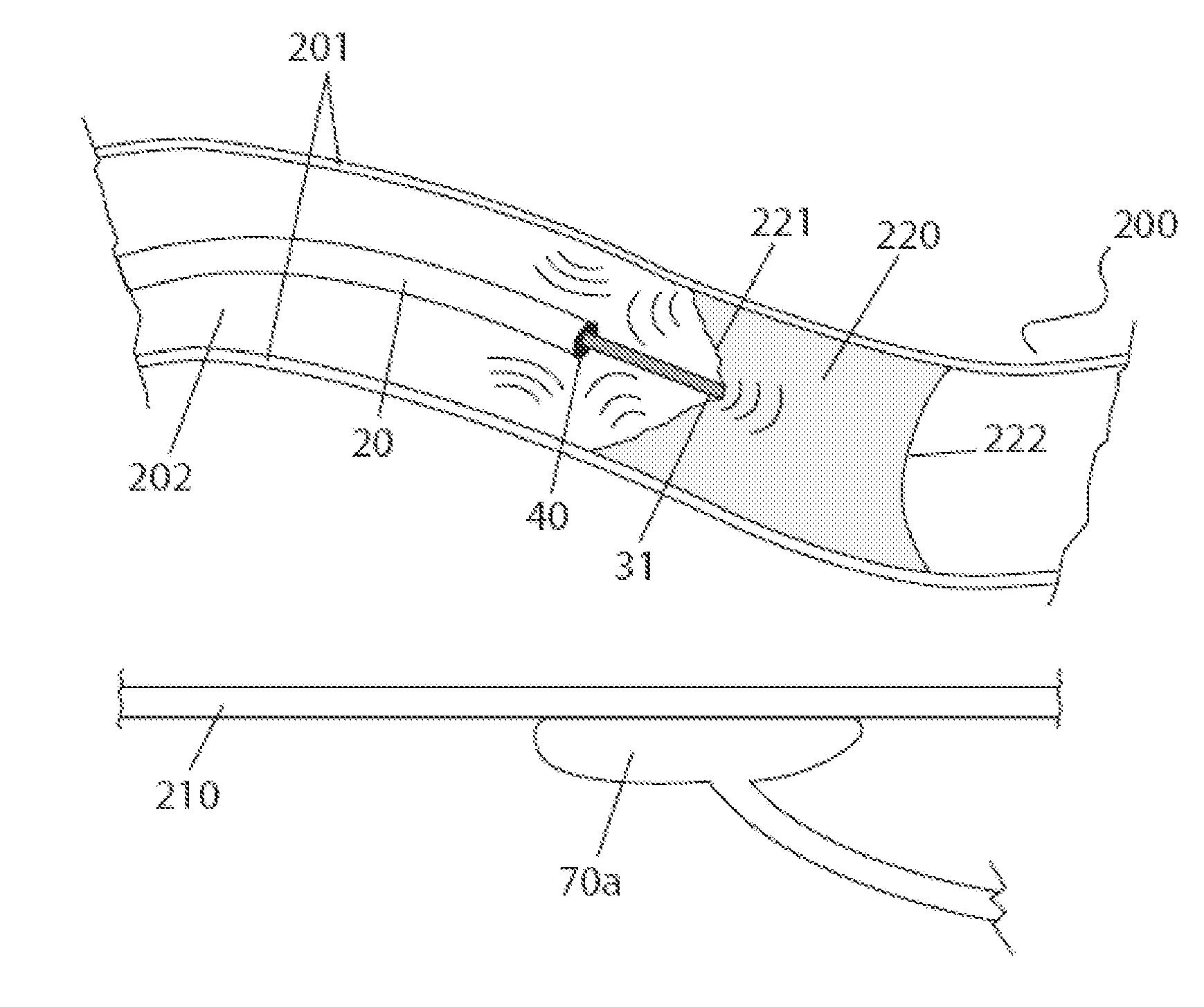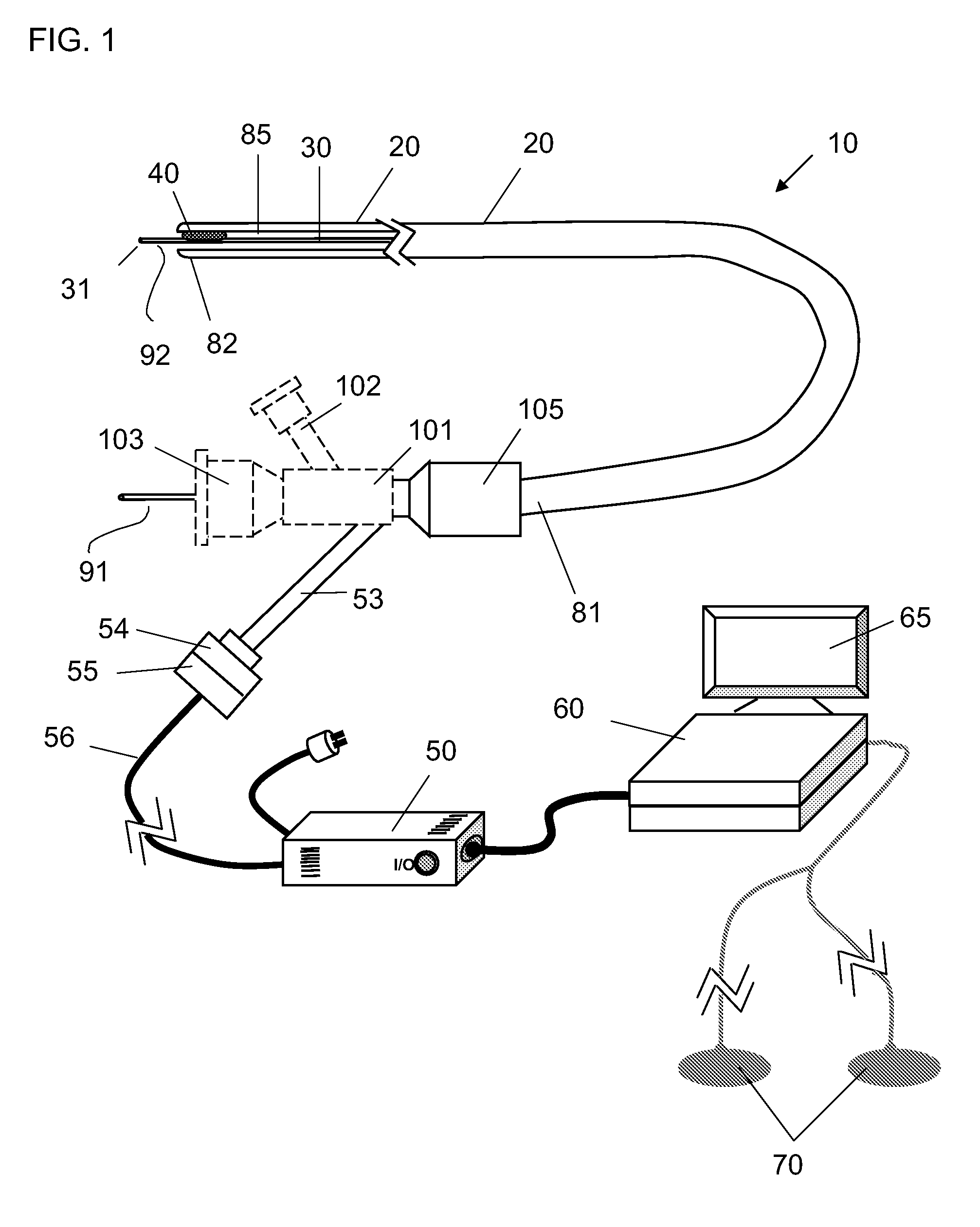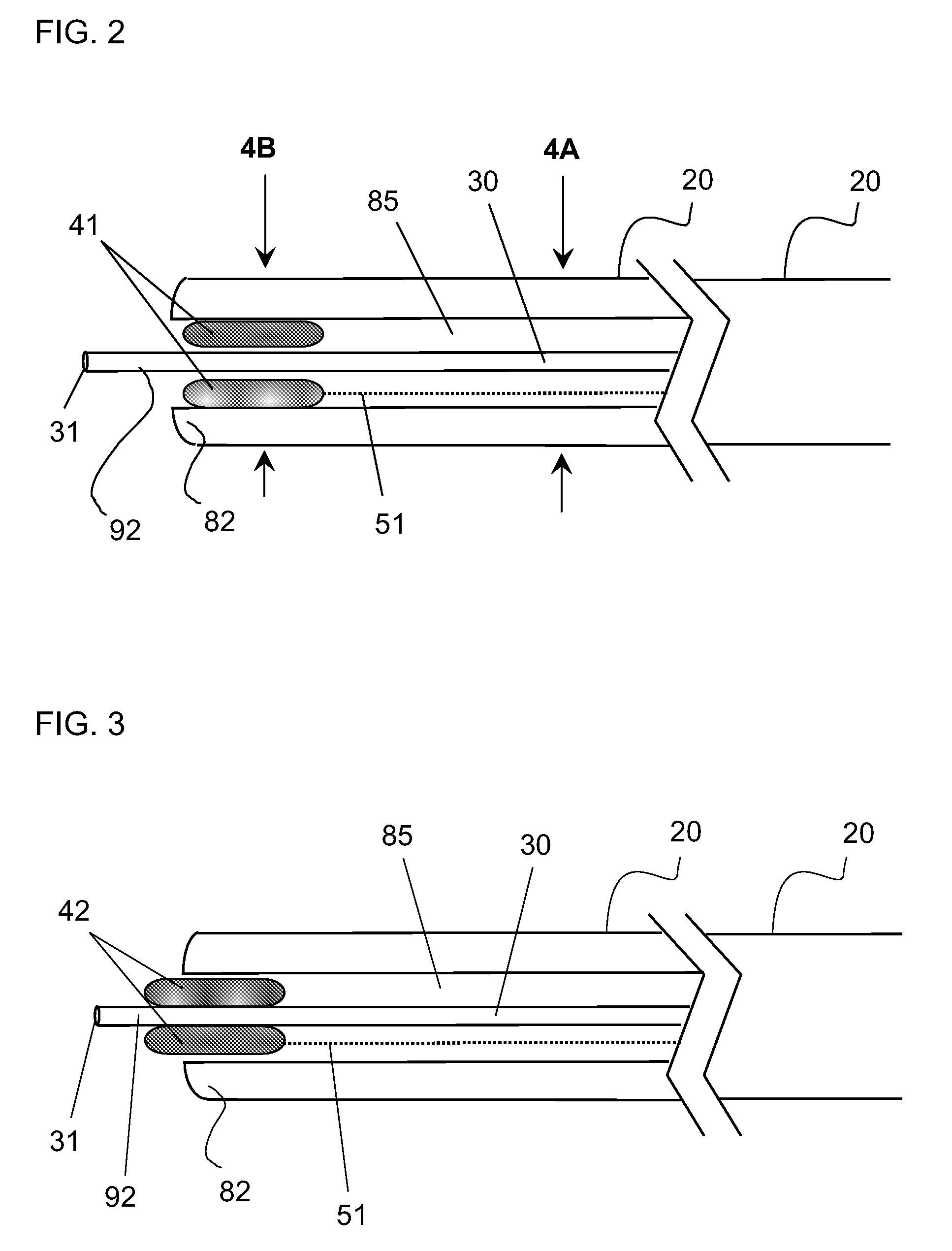Apparatus and Method for Guided Chronic Total Occlusion Penetration
a technology guided penetration, which is applied in the field of guided penetration of chronic total occlusion, can solve the problems of reducing the diameter of the lumen, affecting the treatment effect, and affecting the patient's recovery, so as to facilitate the treatment of the occlusion, facilitate the accurate placement of the guide wire, and facilitate the penetration of the cto
- Summary
- Abstract
- Description
- Claims
- Application Information
AI Technical Summary
Benefits of technology
Problems solved by technology
Method used
Image
Examples
Embodiment Construction
[0020]The present invention generally provides a system for use in guiding an apparatus through a body lumen—such as intravascularly—with accuracy, so as to avoid or reduce the risk of perforating the lumen wall or creating a false lumen. The system comprises a flexible, elongated catheter having a proximal and distal end with at least one lumen extending longitudinally therethrough; a guide wire, also having a proximal and distal end and further having a tip, e.g., a therapeutic tip, at its distal end; a transducer capable of being energized to vibrate at a detectable frequency, which in turn causes the therapeutic tip to vibrate; a power source; a controller for controlling the power source; and a detection system. The detection system comprises one or more receivers and utilizes the controller, which further comprises a processor, for converting signals detected by the receivers into differentiable information. Preferably, the detection system is an ultrasound-based imaging syste...
PUM
 Login to View More
Login to View More Abstract
Description
Claims
Application Information
 Login to View More
Login to View More - R&D
- Intellectual Property
- Life Sciences
- Materials
- Tech Scout
- Unparalleled Data Quality
- Higher Quality Content
- 60% Fewer Hallucinations
Browse by: Latest US Patents, China's latest patents, Technical Efficacy Thesaurus, Application Domain, Technology Topic, Popular Technical Reports.
© 2025 PatSnap. All rights reserved.Legal|Privacy policy|Modern Slavery Act Transparency Statement|Sitemap|About US| Contact US: help@patsnap.com



